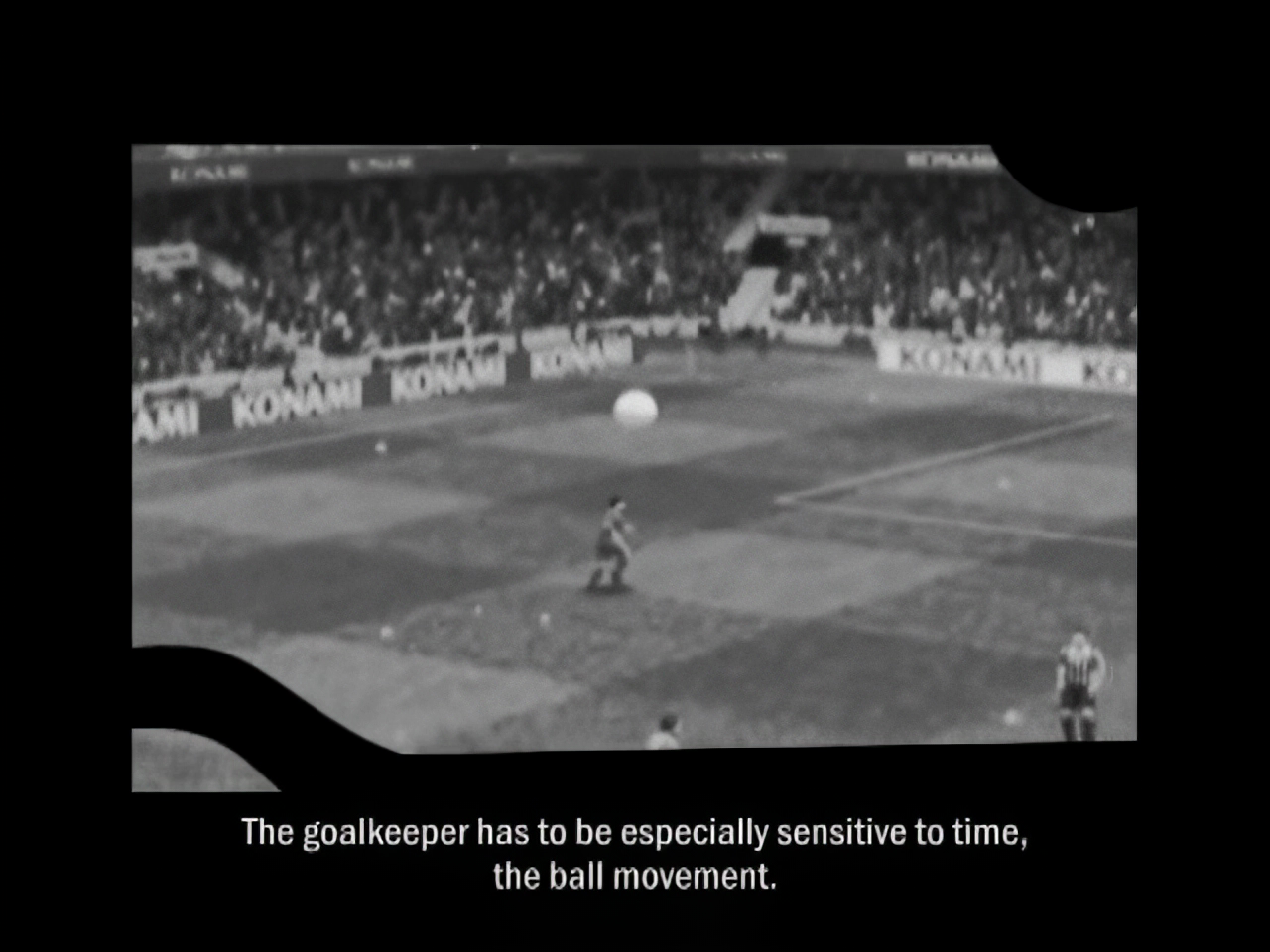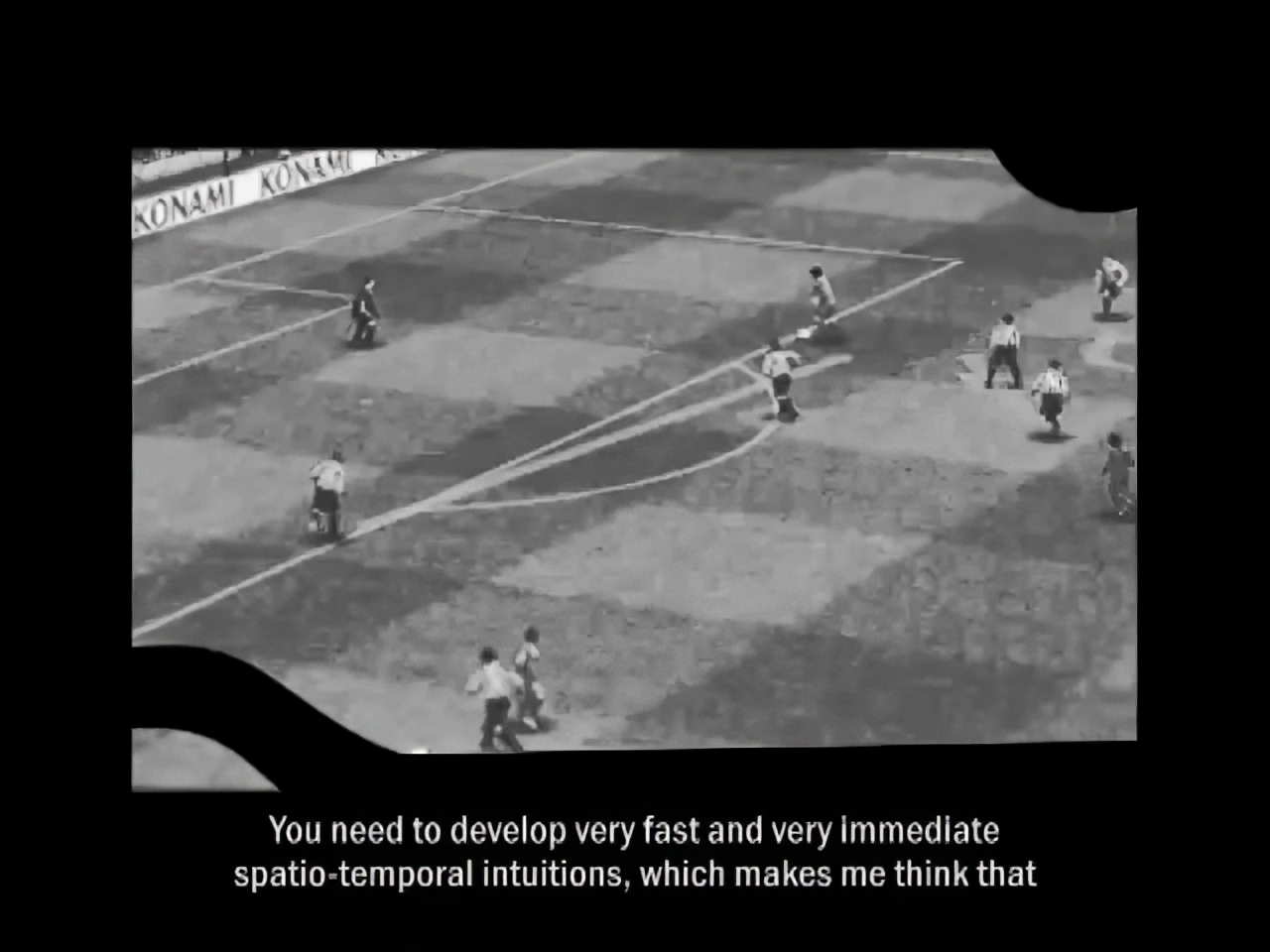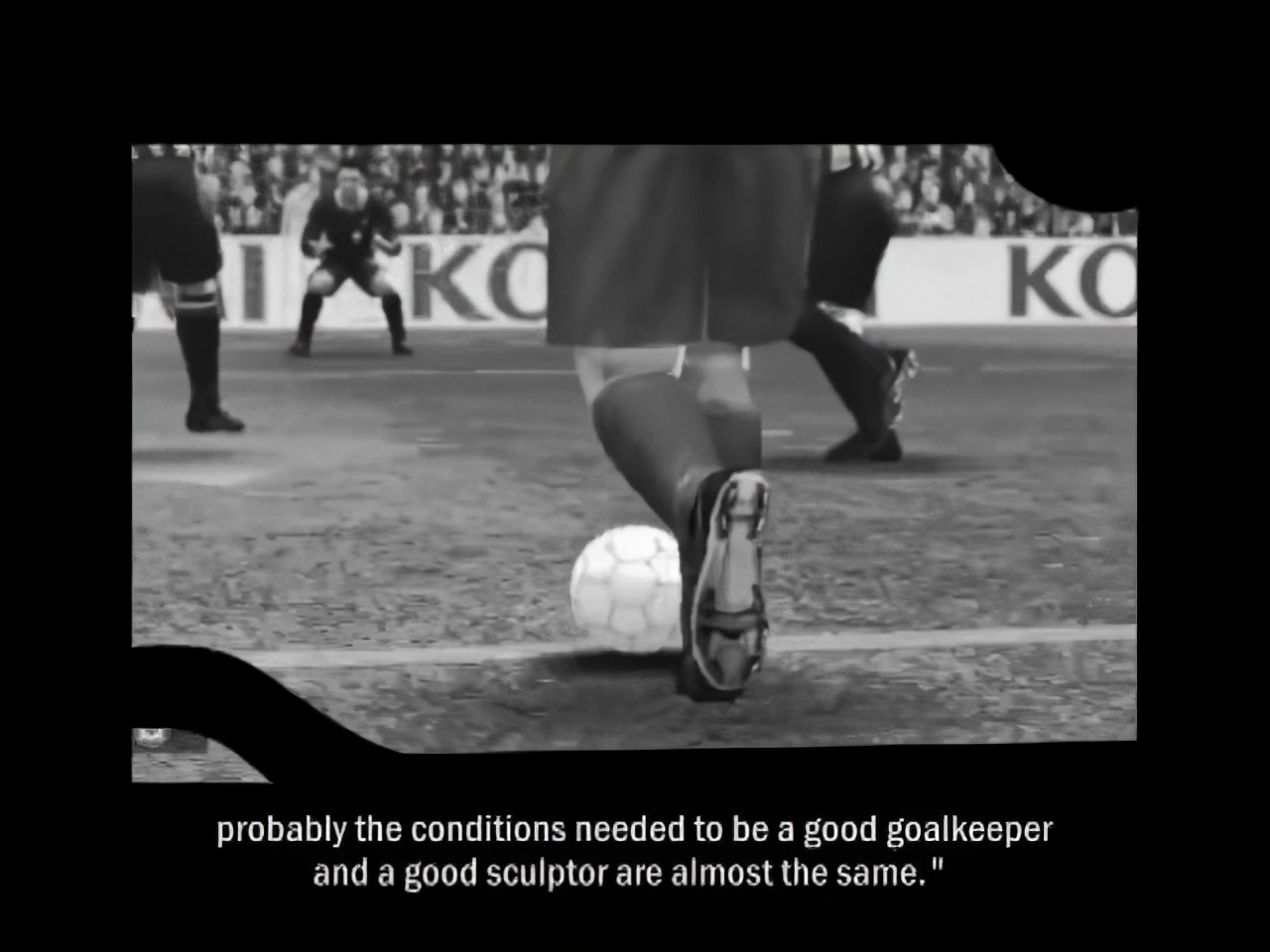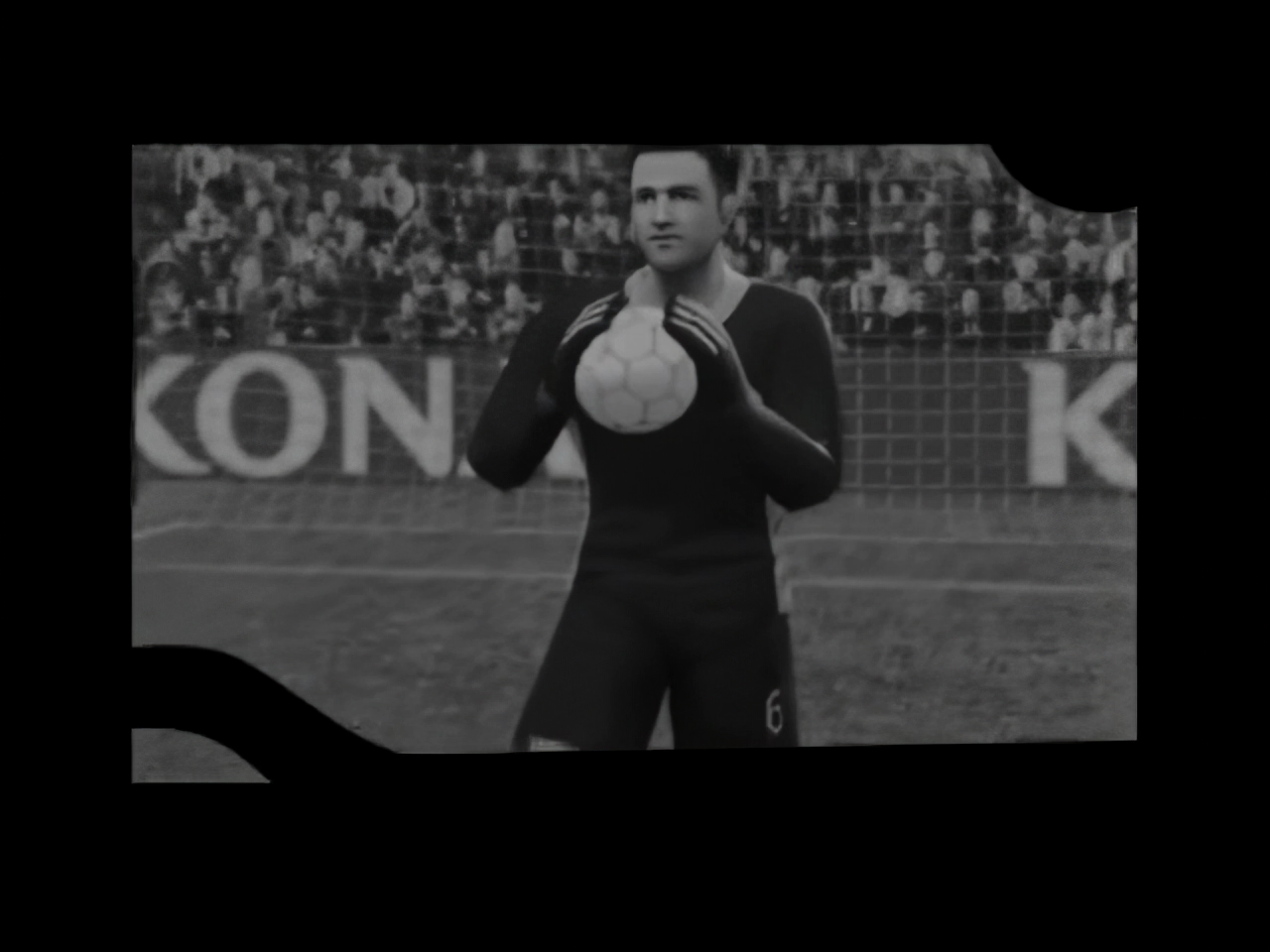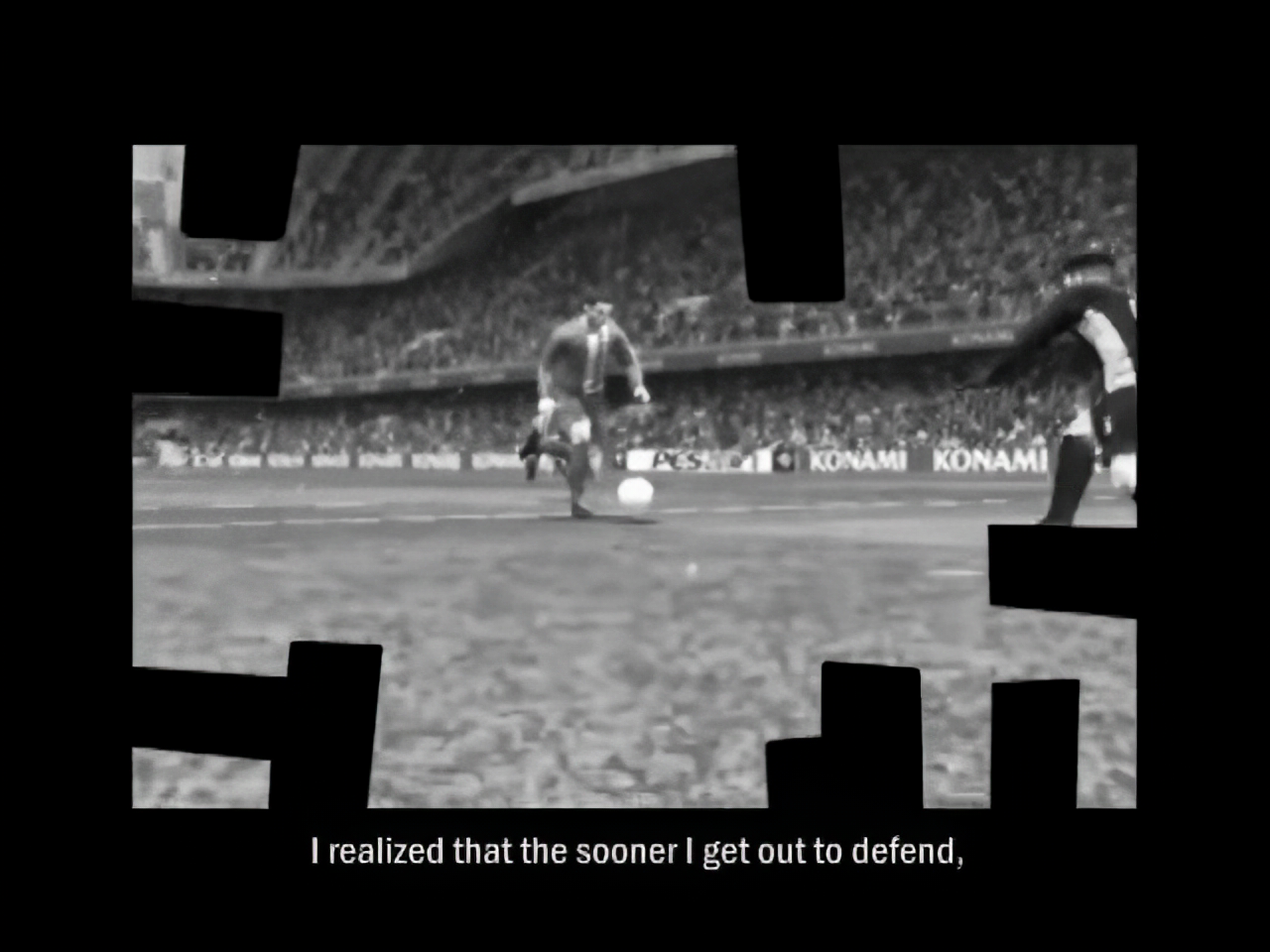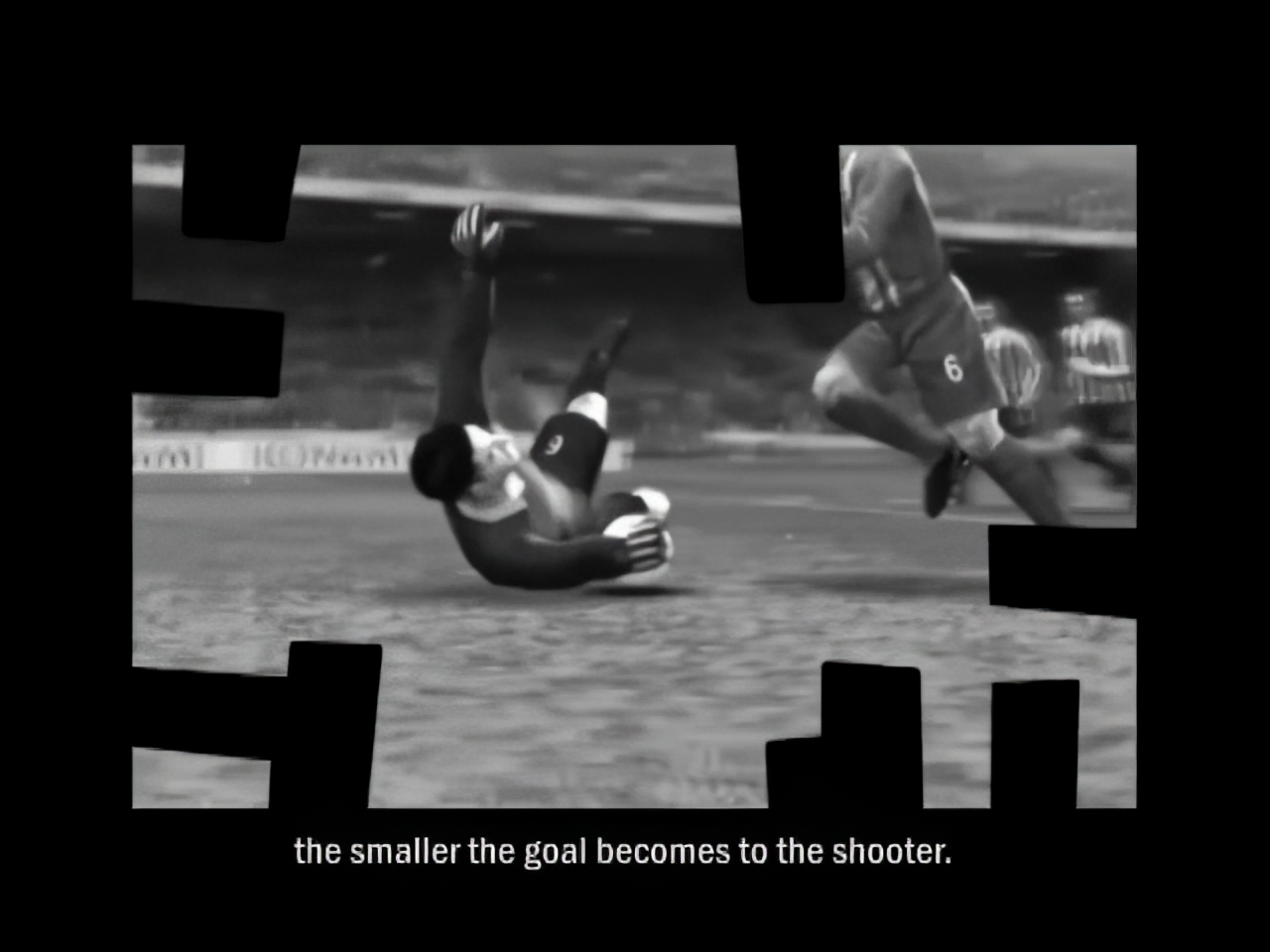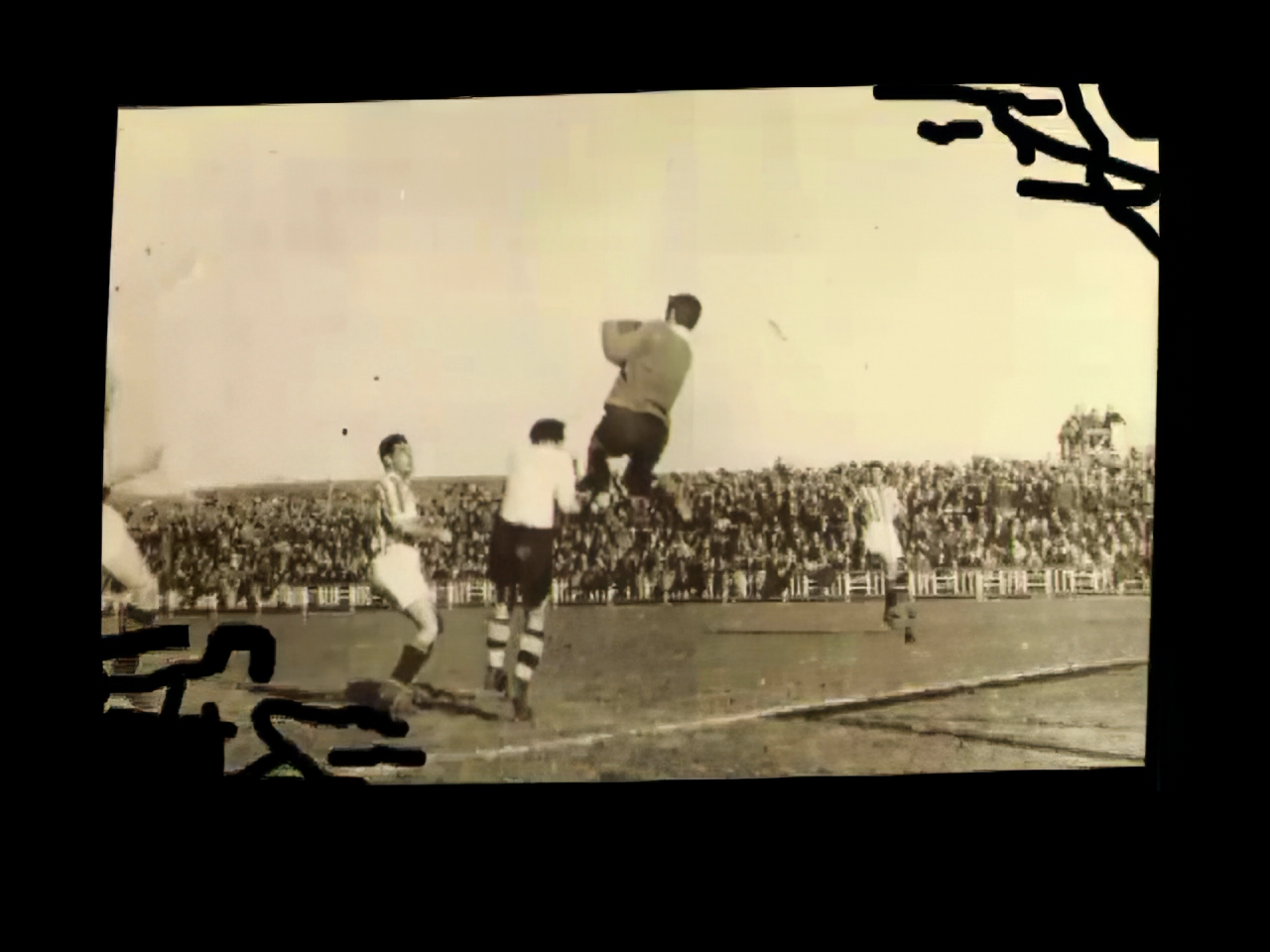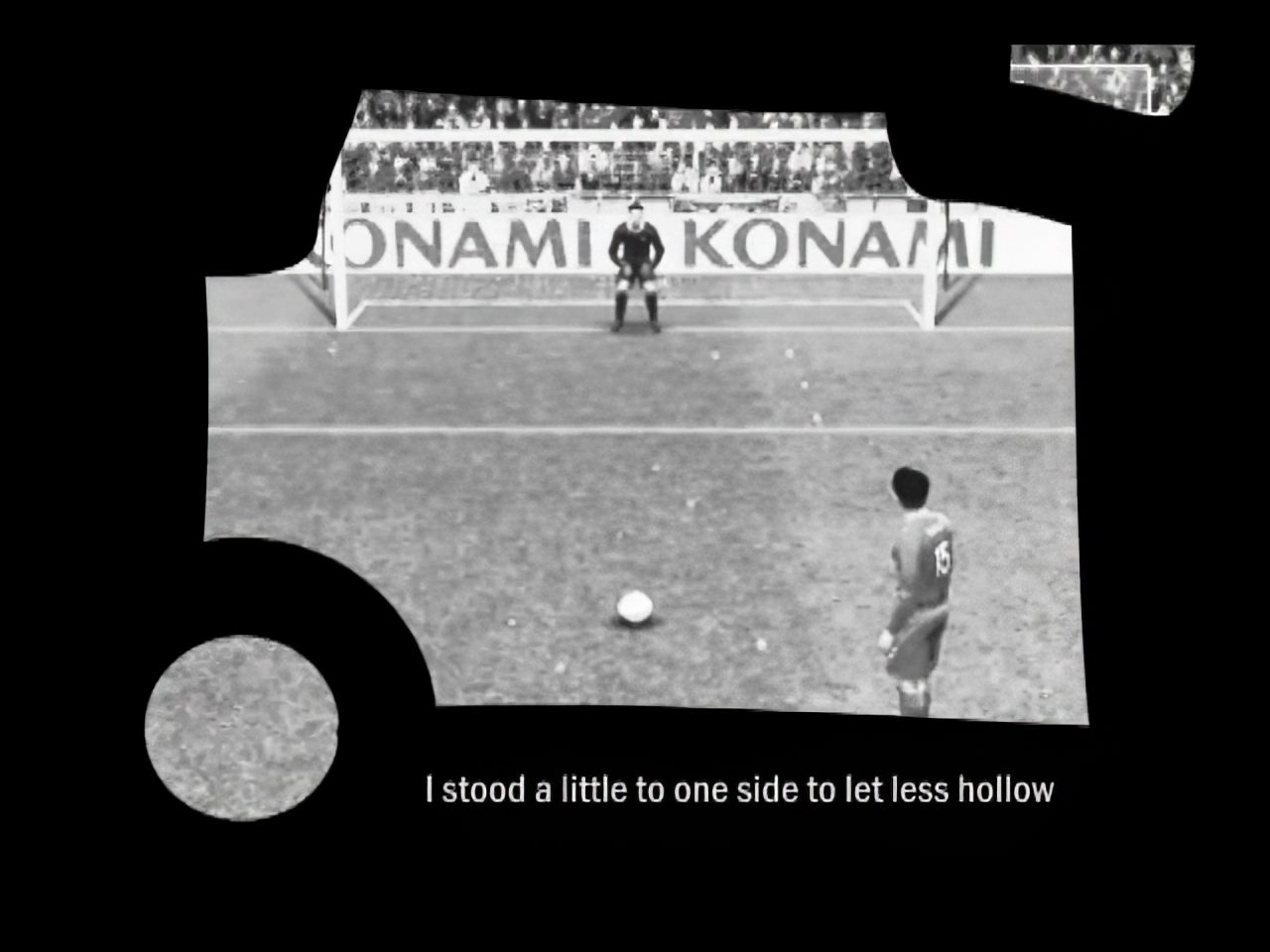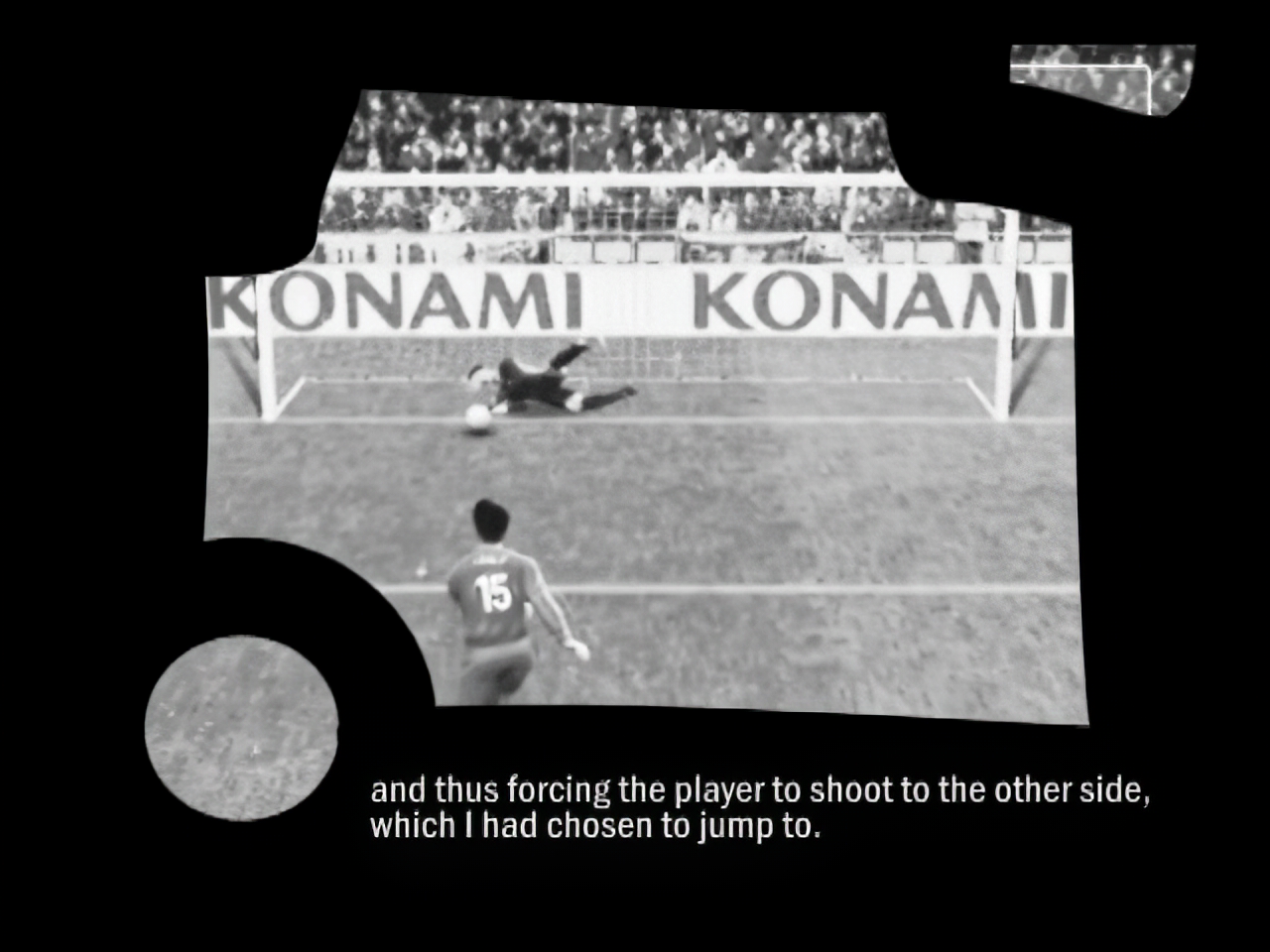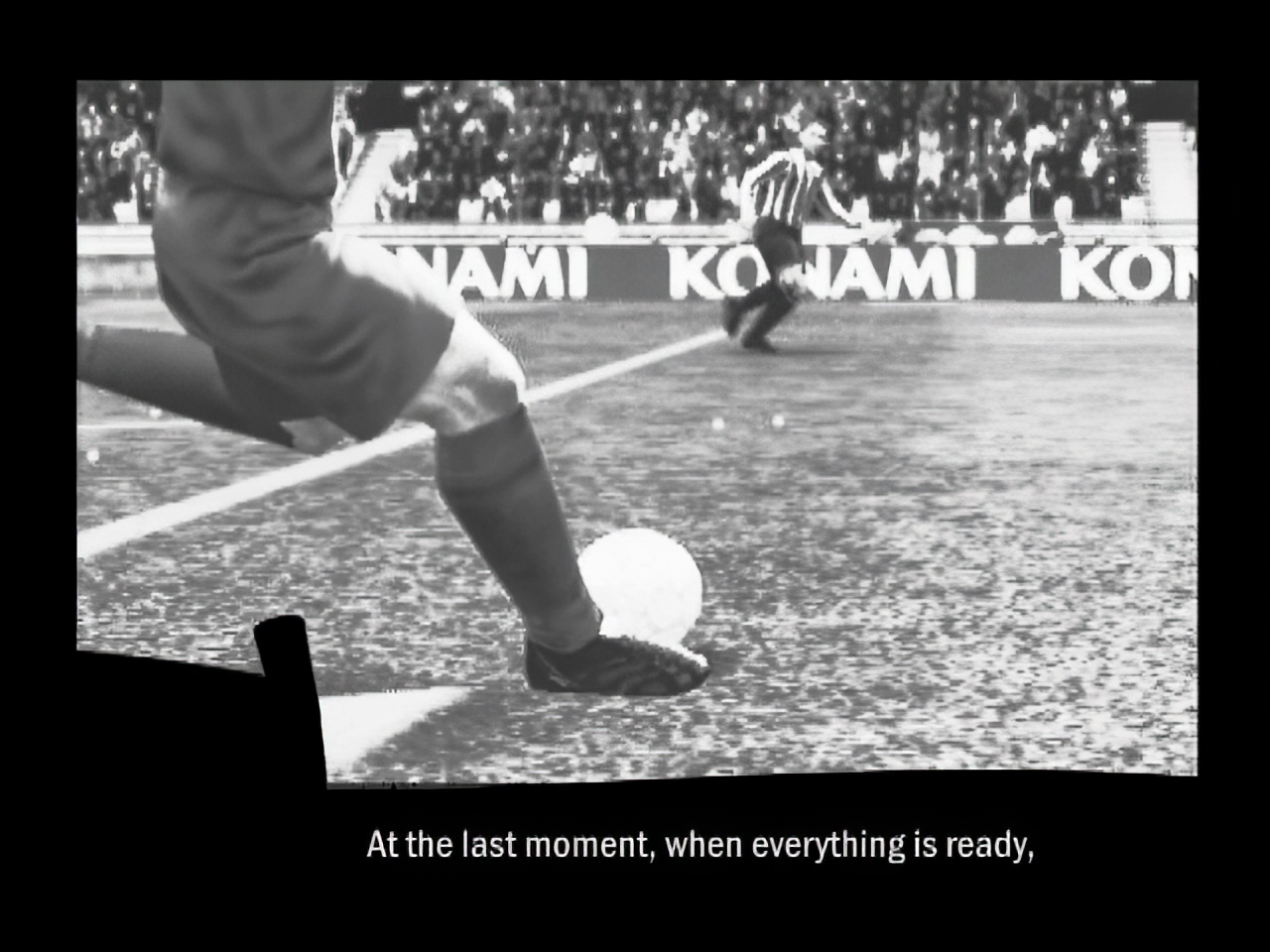VRAL is currently exhibiting Juan Obando’s Pro Revolution Soccer, a modded version of Konami's popular soccer game celebrating a counter-historical event: a match between Inter Milan and the Zapatista Army of National Liberation soccer team that never took place. Today, we are showcasing another example of Game Art made by hijacking, appropriating and recontextualizing Pro Evolution Soccer, Marta Azparren’s El Portero y el vacío (The Goalkeeper and the Void, 2009). This article is part of an on going series.
Spanish artist Oscar Marta Azparren, a graduate of Madrid Complutense University with a degree in Fine Arts, has garnered international recognition for her eclectic body of work, which spans video art, visual arts, and net.art. Exhibiting her creations in key venues and events worldwide, Azparren’s artistic prowess has mesmerized audiences at festivals and retrospectives, solidifying her place in the contemporary art scene.
Azparren’s seminal work, El Portero y el vacío (The Goalkeeper and the Void), was featured in the 2016 exhibition GAME VIDEO/ART. A SURVEY. In her machinima, Azparren appropriated Konami’s Pro Evolution Soccer in order to explore the relationship between football and sculpture, paying homage to the renowned Basque sculptor Eduardo Chillida (1924-2002), who made significant contributions to the field of modern and contemporary art. Born in San Sebastián, Basque Country, Chillida initially pursued a career in professional soccer, playing for the Real Sociedad team from 1942 to 1943, when he was very young. He later retired because of a knee injury and turned his attention to art. His novel journey began with studies in architecture, but he soon shifted his focus to sculpture.
Chillida’s sculptures are characterized by their monumental scale, organic forms, and the exploration of space and material. He worked primarily with iron, steel, and stone, creating massive structures that often incorporated voids and negative spaces. His works embody a sense of harmony between the natural and the man-made, blending organic shapes with a modernist aesthetic. One of Chillida’s signature techniques involved carving directly into granite or alabaster, allowing the natural qualities of the material to guide the creative process. His sculptures often conveyed a sense of weight and tension, evoking a profound emotional and physical presence…
Matteo Bittanti
This is a Patreon exclusive content. To access it consider joining our growing community.



